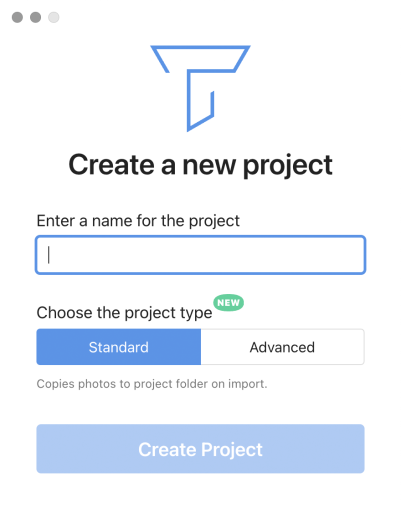Digitized materials have become increasingly common in the historian's craft over the last two decades. However, the sheer volume of digital data can be overwhelming, making it difficult to comprehend and analyze. Any historian who has worked with digitized primary sources knows how difficult and time-consuming it can be to establish a consistent system for organizing and making sense of large sets of research photographs. Given today's data's intricacy, abundance, and fuzziness, we should recall that if content, or data, is king, context is its crown1. This is where Tropy comes in: as a digital tool designed specifically for managing and annotating digital images, it provides a means of adding context to digitized sources. Tropy was initially developed at the Roy Rosenzweig Center for History and New Media (RRCHNM) and was first introduced as a beta version in 2016. Currently, its development is a joint effort between RRCHNM, the Luxembourg Centre for Contemporary and Digital History (C²DH), and Digital Scholar, a non-profit corporation that operates several data management projects such as Zotero, Omeka, and Sourcery. The development these tools were, somehow, catalyzed and driven by the growing demand for support with information management practices and technologies; a major dilemma in the Library and Information Science realms2.
Tropy is a handy piece of software for researchers who have a large number of digital images to manage. The tool assists researchers in organizing, describing, and annotating their research photographs by using tags, lists, notes, and metadata templates. These features, for the sake of consistency, enable researchers to tailor their data management process while maintaining standardization via customized metadata templates and controlled vocabularies. Furthermore, the search function allows for quick searches that include all project information, including metadata, notes, and tags.
Whether you are an explorer, a new user or someone who has known about Tropy for a while, but has not given it a try recently, the Tropy team is happy to share an important announcement: the latest release of Tropy 1.13 is out! In this new version, beyond performance and user interface improvements (see full release notes here), Tropy introduces the new standard project type.
- 1. See: Fickers, Andreas. “Veins filled with the Diluted Sap of Rationality: A Critical Reply to Rens Bod”. BMGN - Low Countries Historical Review 128, no 4 (16 de dezembro de 2013): 155–63; Snickars, Pelle. “If Content Is King, Context Is Its Crown”. VIEW Journal of European Television History and Culture 1, no 1 (21 de fevereiro de 2012): 34–39. https://doi.org/10.18146/2213-0969.2012.jethc006.
- 2. See: Trace, Ciaran B., e Unmil P. Karadkar. “Information Management in the Humanities: Scholarly Processes, Tools, and the Construction of Personal Collections”. Journal of the Association for Information Science and Technology 68, no 2 (2017): 491–507. https://doi.org/10.1002/asi.23678.
In the new project type, all imported pictures are copied into a bundled project folder, which can be easily moved around or shared with other devices without requiring photo consolidation. Users can choose to work on the prior project type, which is now referred to as an "advanced" project. But users may also choose to convert their projects into the new standard one if they like. See the newest Tropy blog post for more information on the project types.
No matter what stage you are at with your project, if you are working with digitized primary sources, we highly recommend giving Tropy a try. Installing Tropy is incredibly easy and the learning curve is minimal. Plus, Tropy's user interface is available in English, French, German, Italian, Japanese, Chinese, Spanish, and Portuguese, including the recently added Brazilian Portuguese (PT-Br) locale.
If you are eager to kick off your Tropy project but unsure of how to start, we encourage you to check out our 5 min YouTube video Getting Started with Tropy (also available in Spanish). And if you are in the mood to engage in a longer reflection of how Tropy mingles into the historian’s craft, you should definitely listen to Episode 16 of the Drafting the Past podcast, in which host Kate Carpenter and Abby Mullen (former Co-PI os Tropy) talk about the advantages of using Tropy to manage primary source research. For any queries, feel free to contact one of the Tropy Team historians (signing this post) and/or for rather practical issues, do not hesitate to leave your questions on the Tropy forums.
References:
- Fickers, Andreas. “Veins filled with the Diluted Sap of Rationality: A Critical Reply to Rens Bod”. BMGN - Low Countries Historical Review 128, no 4 (16 de dezembro de 2013): 155–63.
- Snickars, Pelle. “If Content Is King, Context Is Its Crown”. VIEW Journal of European Television History and Culture 1, no 1 (21 de fevereiro de 2012): 34–39. https://doi.org/10.18146/2213-0969.2012.jethc006.
- Trace, Ciaran B., e Unmil P. Karadkar. “Information Management in the Humanities: Scholarly Processes, Tools, and the Construction of Personal Collections”. Journal of the Association for Information Science and Technology 68, no 2 (2017): 491–507. https://doi.org/10.1002/asi.23678.
Written by Anita Lucchesi, Sean Takats and Douglas McRae.





